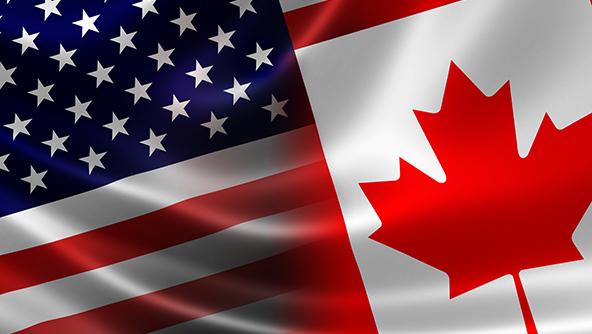To help achieve clarity around OSHA and Health Canada’s current and future alignments with GHS, the respective agencies have issued new clarifications regarding how their resulting regulations may differ, and how compliance professionals can prepare.
It was announced last week that both agencies have jointly developed a Work Plan. This latest plan includes guidance on the implementation of GHS alignment in the US and Canada, and projected schedules for coordination of common positions between both countries. According to the plan, its larger purpose is:
“…to ensure that the requirements in Canada and the U.S. for hazard classification and communication can and will be met now and in the future, to the greatest extent possible, with one label and one safety data sheet that would be acceptable in both countries, without reducing the level of safety or protection to workers.”
Added OSHA head Dr. David Michaels: “This plan is part of ongoing efforts between OSHA and Health Canada to reduce regulatory barriers between U.S. and Canadian systems responsible for chemical safety and provide concise information to protect workers exposed to hazardous chemicals.”
This builds on work earlier in the summer, when representatives from both OSHA and Health Canada participated in the thirty-first meeting of the UN Sub-committee of Experts on the GHS. There, they discussed additional ways to create harmony between Canada’s alignment with GHS and that of the US.
Also discussed at the UN meeting was Health Canada’s technical guidance document — Technical Guidance on the Requirements of the Hazardous Products Act and the Hazardous Products Regulations (Technical Guidance) — Phase I of a guide designed to help Canadian industry comply with WHMIS 2015 (Canada’s adoption of GHS). Phase I covers the classification and labeling of hazardous chemicals. Phase II is expected this fall or winter, and will focus on the physical and health hazards associated with chemical use. The document is not currently hosted online, but a copy can be requested on the Health Canada website. Technical Guidance Phase I includes details about SDS requirements, updated definitions of a ‘manufacturer, importer, distributor and supplier,’ and more.
Though OSHA and Health Canada have repeatedly stated that they intend to make their respective alignments as similar as possible, there are still areas where large differences will occur. As the Technical Guidance document shows, instances of this include:
- Under Canadian alignment, labels and SDSs must be in both English and French. (In the US, only English is required.)
- In Canada, the supplier identifier must be on the shipped label and the SDS. (In the US, it is only required on the shipped label.)
- In Canada, HNOC hazards will have required label elements, and will need to be disclosed on labels. (In the US, HNOC hazards do not need to be disclosed on a label, and are only required to be noted on Section 2 of the SDS.)
Perhaps the most important disclosure in the Technical Guidance document is that OSHA and Health Canada have agreed that label and SDS information which is superfluous for one country, but required for another, is acceptable to include on documentation used in either locale. As Technical Guidance puts it:
“Canada and the U.S. have each agreed to accept the additional information required by the other. It is therefore possible to meet both Canadian and U.S. requirements for a hazardous product using a single label and SDS. Such labels and SDSs would have to meet the requirements for each country. It is important to note, however, that an SDS and label that are compliant with the HCS 2012 [the US] may not be sufficient for compliance in Canada; suppliers selling or importing hazardous products to Canadian workplaces must be compliant with the Canadian requirements.”
So if, for example, an OSHA inspector sees elements intended to satisfy Canadian requirements (like French in addition to English) there should be no resulting complication.
We can expect more details when the second phase of the Technical Guidance document is released in the fourth quarter of this year. For more technical guidance on the requirements of Health Canada’s alignment with GHS, you can visit their dedicated webpage.
In the meantime, if you need a bilingual resource for familiarizing Canadian employees with pictograms under Canadian GHS alignment, our new Canadian GHS Pictogram Poster — available in English and in French — outlines the 9 GHS Health, Physical and Environmental Hazard Pictograms employees and employers should be familiar with, as well as the Biohazardous Infectious Materials classification which is expected to be retained. The corresponding hazard categories expected post adoption are listed with each image. Print it out and put it up in your workplace for a quick and easy way to help keep workers informed and your workplace compliant!







